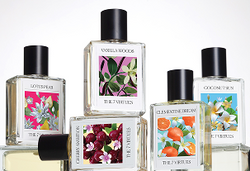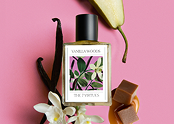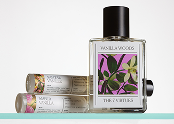Tout ce que vous devez savoir pour maîtriser l'art de la superposition de parfums

Tout est une question de technique.
Il existe de nombreuses façons de se parfumer. La façon dont vous portez votre parfum dépend entièrement de votre style de vie. La façon la plus traditionnelle de se parfumer consiste à simplement vaporiser son parfum et à terminer la journée. Cependant, pour celles et ceux qui souhaitent personnaliser davantage leur parfum et créer une combinaison unique et exclusive, la superposition de parfums entre en jeu.
La superposition de parfums est une technique qui consiste à combiner stratégiquement différentes fragrances pour créer une fragrance unique. Si cette technique vous intéresse pour jouer avec les fragrances et exprimer votre individualité, il est temps de maîtriser l'art de la superposition de parfums.
Avant de vous lancer dans la superposition de parfums, il est essentiel de comprendre les notes olfactives. Un parfum se compose de notes de tête, de cœur et de fond. Les notes de tête sont les premières senteurs perçues à l'application ; elles sont généralement légères et s'évaporent rapidement. Les notes de cœur émergent après la dissipation des notes de tête et forment le cœur du parfum, lui apportant corps et caractère. Les notes de fond constituent la base du parfum, lui conférant longévité et profondeur, et persistant sur la peau pendant des heures.
@the7virtues Si vous ne superposez pas encore vos parfums, c'est le signe qu'il faut commencer ! ✨ #parfum #superposition #sephora ♬ Fleurs - Miley Cyrus
Maintenant que vous avez une compréhension des notes de parfum et de la façon dont elles se développent, voici tout ce que vous devez prendre en compte pour apprendre à maîtriser l'art de la superposition de parfums.
Commencez avec une peau propre : avant de réfléchir aux types de parfums à combiner, il est important de commencer avec une table rase.
Appliquez une base de parfum : les bases de parfum sont spécialement formulées pour compléter et sublimer les superpositions de parfums. Elles offrent une base neutre pour un mélange harmonieux des fragrances. Appliquez la base sur vos points de pulsation et superposez les parfums par-dessus.
Équilibrer les notes olfactives : Un parfum bien structuré requiert un équilibre délicat entre les notes de tête, de cœur et de fond. Combiner plusieurs notes de tête dominantes peut donner un départ trop chargé qui s'estompe rapidement. À l'inverse, une concentration excessive de notes de fond peut être écœurante. Recherchez un mélange équilibré qui se déploie harmonieusement au fil du temps, mettant en valeur chaque note.
Choisissez des parfums complémentaires : Lorsque vous superposez des parfums, assurez-vous qu'ils se complètent. Des associations synergiques subliment le parfum pour un mariage harmonieux. Vous pouvez choisir des parfums aux notes similaires ou de la même famille olfactive. Par exemple, vous pouvez superposer notre classique Vanilla Woods , au parfum magnifiquement simple et pur, avec Santal Vanille pour rehausser le parfum boisé et vanillé des deux parfums.
Associez des senteurs simples et complexes : Vous pouvez également combiner des parfums de différentes familles olfactives, comme le vétiver, l'élémi et la rose ambrée , pour un résultat plus complexe. Par exemple, vous pouvez commencer par une note de tête hespéridée, ajouter une note de cœur florale et terminer par une note de fond boisée ou musquée. Cette technique demande plus d'attention aux détails, mais elle peut donner lieu à une expérience olfactive remarquable.
Portez le parfum le plus puissant comme base : la superposition consiste à appliquer un parfum avant l'autre. Commencez donc par le mélange le plus puissant pour permettre au deuxième (et au troisième, et ainsi de suite) de s'exprimer pleinement. Par exemple, les huiles parfumées doivent être appliquées avant l'eau de parfum traditionnelle, car elles sont plus concentrées en parfum. Si vous utilisez des parfums à pourcentages d'huiles parfumées équivalents, appliquez d'abord celui qui a le parfum le plus fort afin que le plus léger ne soit pas noyé.
Testez de petites quantités : Commencez par expérimenter avec de petites quantités de chaque parfum afin d'éviter de surcharger la composition. Une ou deux vaporisations de chaque parfum devraient suffire pour évaluer leur interaction. À mesure que vous vous familiariserez avec le procédé, vous pourrez ajuster les proportions selon vos préférences.
Maintenant que vous maîtrisez les bases de la superposition de parfums, vous êtes prêt à créer un parfum signature qui reflète votre personnalité et votre créativité. (Nous vous suggérons d'utiliser notre Coffret Découverte Parfums Peace pour tester quelques-uns de nos parfums les plus vendus.) Alors, lancez-vous et explorez l'univers des parfums en toute confiance, en vous lançant dans ce voyage aromatique passionnant.




